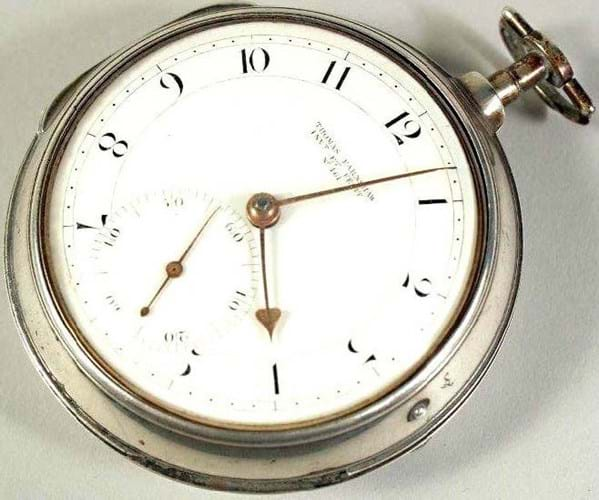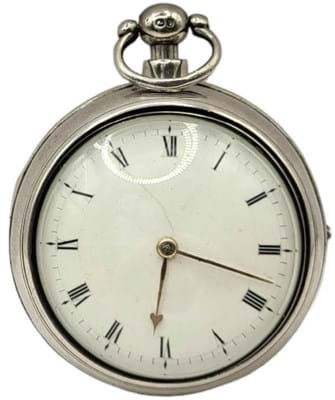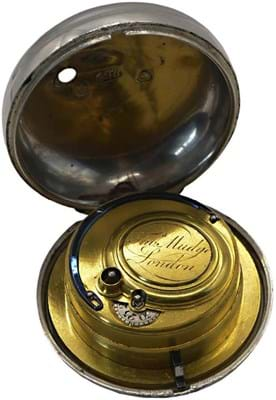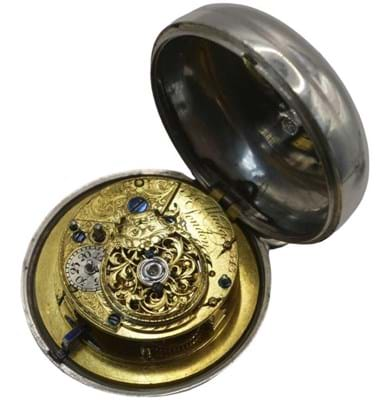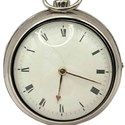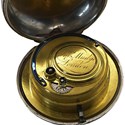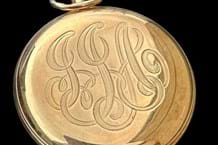Selling for 35 times the high estimate, a George III silver pair cased pocket watch by Thomas Earnshaw (1749-1829) certainly attracted attention at John Nicholson’s (25% buyer’s premium) in Fernhurst on March 6.
Consigned by a local lady in Surrey with an estimate of £150-200, it made £7000, selling to a collector in the room.
The watch is signed to the white enamel dial Thomas Earnshaw Invt et Fecit No. 461and to the movement Tho Earnshaw, London, No. 2764.
Although catalogued as a verge escapement, it is possible this was a spring detent escapement - the invention (along with the compensation balance) that makes Earnshaw one of the great names in 18th century horology.
Posthumously, one of Earnshaw’s marine chronometers was used on HMS Beagleduring Charles Darwin’s first expedition between 1831-36.
The pull of a lever
Also offered on March 6, this time at Swan Fine Art (21% buyer’s premium) in Tetsworth, Oxfordshire, was a watch by Thomas Mudge (1715-94). It achieved £5500 against an estimate of £1000-2000.
Although in a much later silver case (hallmarked for London 1824) and with a hairline crack to the dial, the movement is signed T. Mudge London 343.
Several factors helped contribute to the interest level. The cataloguing described it as having an early lever escapement, the modification Mudge first made in the mid-18th century which remains the basis of mechanical watches today. One of the earliest-known examples is ‘Queen Charlotte’s Lever Watch’ dated c.1770 which is held in the Royal Collection.
Lever escapement watches by Mudge alone are rare: most are signed for both Mudge and Dutton after he formed a partnership with William Dutton.
Head of department Paul Hayes said that the watch had belonged to a long-established collector. He added: “After 30 years of handling pocket watches it’s nice to see them being appreciated now.”

